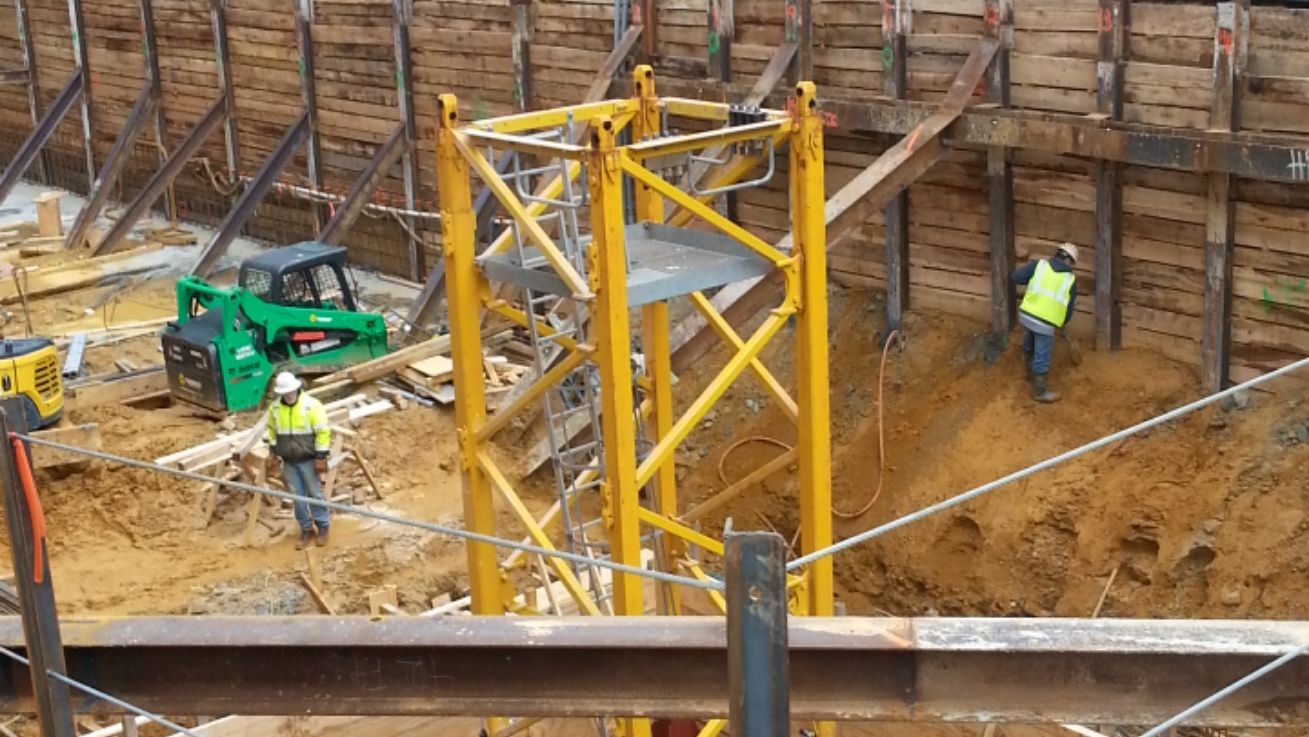Patterson Mansion
- Location: Washington, DC
- Scope: Sheeting and underpinning
- General Contractor: Manhattan Construction
- Category: Commercial
The Project
The Patterson Mansion, located in the congested Dupont Circle neighborhood of NW Washington, DC, was originally built in 1903 for Chicago Tribune editor Robert Patterson. The mansion changed uses and owners several times over the years; it has housed guests such as Charles Lindbergh and President Calvin Coolidge, who used the mansion during a time of White House renovations. In its latest incarnation, it was destined to become a micro-unit apartment building.
Part of the project involved demolishing an addition on the east side of the mansion and constructing in its place a new 7-story micro-unit apartment building with a basement below grade. The project also required a tight excavation between the existing mansion structure and a neighboring embassy.
Why Steele Foundation?
Steele Foundation was selected to perform the sheeting and underpinning work for the addition based on our conservative design specifying predrilled steel soldier beams, wood lagging, and internal steel braces for the sheeting. The underpinning we proposed was also fairly typical; we designed for unreinforced concrete underpinning piers with internal steel braces.

Challenges and Results
As with any engineered foundation construction job in the DC area, Patterson Mansion posed unique challenges to the design. Steele Foundation was eager to put in the diligence and dedication this project demanded in order to preserve a part of history. We also knew that to successfully complete the project, we would need full cooperation with the general contractor, excavator, owner, and neighbors.
Access challenges proved to be the most obvious issue with the adjacent embassy and the project’s 6-foot adjacency to the property line. The closed-in site and the small footprint contributed to access problems that impacted nearly all tasks in the early construction phases.
The issues we encountered on the Patterson Mansion project required us to continuously review our designs and methods, from initial bid on to the end of the project. Even with our conservative design, there was still no guarantee that the building would be unaffected. When reviewing monitoring procedures with the surveyor, we emphasized the need for frequent monitoring of the adjacent building and sheeting system.
We went even further to reach an agreement with the general contractor and owner regarding responsibility as it related to movement of the adjacent structure and sheeting system. This performance-based agreement proved to be a good way to mitigate risks of the unknown.